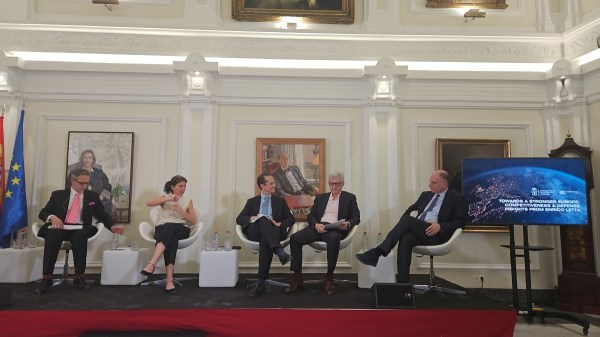
This month Telefónica launched the Telefónica Index on Digital Life, the most comprehensive Global Index on Digital Life ever developed. The Index measures how different countries and their citizens are progressing towards a Digital Economy and a Digital Society, which can be referred to jointly as Digital Life. The Index specifically explores this progression, in 34 countries worldwide, through three sub indexes:
1. DIGITAL OPENNESS: How openly infrastructure facilitates information access and information flows. It does this by looking at internet freedom and openness and availability of digital public services.
2. DIGITAL CONFIDENCE: How willingly and confidently individuals and organisations engage with the digital infrastructure and with the digital world. This is assessed through digital adoption, privacy and security indicators.
3. DIGITAL ENTREPRENERSHIP: How readily citizens and organisations economic activities prosper in the digital environment. Readiness is weighed by the development of digital literacy, digital businesses, innovation and finance.
The Index shows a variety of factors that together influence the Digital Life of the citizens in a given country. Governments have to develop comprehensive policy plans and invest accordingly. The outcomes of this first edition of the Index support our core belief that digital technology should:
- Be accessible to everybody: whilst the development of internet access infrastructures is a high priority for Telefónica, there are still various barriers that must be overcome to enable increased connectivity. These barriers include the affordability of devices and digital services, improving digital literacy, and increasing the availability of local and relevant content.
- Be based on open and interoperable services, platforms and ecosystems: open systems are the most effective ways of encouraging innovation. However, proprietary systems and services are becoming more and more relevant, threatening the founding idea of an open Internet and jeopardising the portability of digital life. Thus, policy makers face an unprecedented opportunity to promote policies that can deliver better digital experiences and boost digital innovation.
- Be trustworthy: digital trust encompasses privacy, security and transparency. Our strategy for sustaining digital confidence is to put people in control of their personal data, keep their identities private and ensure that their data is secure.
- Ease innovation and entrepreneurship: innovation is an important driver of the digital revolution but success is not just a question of attitude. Action is required to promote it in each stage of technological development.
As it would be expected, the Index scores correlate strongly with the country’s wealth: the richer the country is, i.e. the higher its GDP per capita, the better the score should be as wealthy economies have more funds to invest in infrastructures and R&D. For drawing sharper conclusions, the Index analyses relative performance to GDP, allowing us to see not only how a country is allocating its resources but also how efficiently it is doing so in order to nurture Digital Life. By doing so, the Index enables us to identify policy areas that countries can work on more efficiently to improve their Digital Life. These areas can range from market and user focused policies to digital knowledge and skills-focused policies.
The Index does not only unveil a country ranking and a more comprehensive way of measuring Digital Life, but also initiates a multifaceted debate on Digital Life among the different stakeholders (consumers, public policy-makers, business, media, and government). In doing so it stimulates and develops the policy initiatives that are necessary to create a better Digital Life for all.











